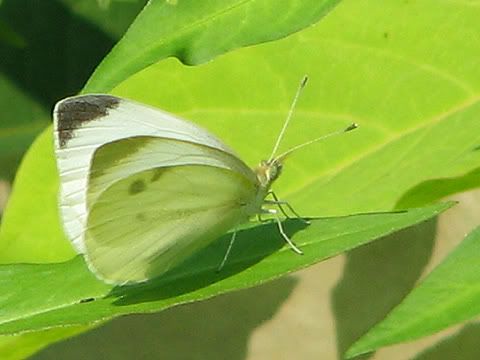365 Urban Species. #196: Cabbage White

Photo by cottonmanifesto
Urban species #196: Cabbage white Pieris rapae
It is a testament to the urban prevalence of plants in the mustard family, that the cabbage white is, by far, the most common butterfly in the city. The cabbage white is a European insect, first discovered in North America in the late 1800's. Most likely it was accidentally introduced on some crop plant in the family Brassiceae--which includes: cabbage, broccoli, brussels sprouts, kale, chard, cauliflower, rutabaga, turnip, radish, mustard, horseradish, collard, arugula, bok choy, water cress...and so on. These plants are favored by the cabbage white larva, a plump green caterpillar, but it may feed on others as well. An urban cabbage worm may feed on field mustard, yellowrocket, or many others. They do not, apparently and unfortunately, feed on garlic mustard. In addition to the fact that they have many host plants available to them, cabbage whites also have the advantage of rapid reproduction. In New England, three generations of butterflies can be produced per year; in the south they can produce up to eight generations in a year. Cabbage whites can be distinguished from other small white butterflies by the markings on their forewings, and the yellowish color of their hindwings.